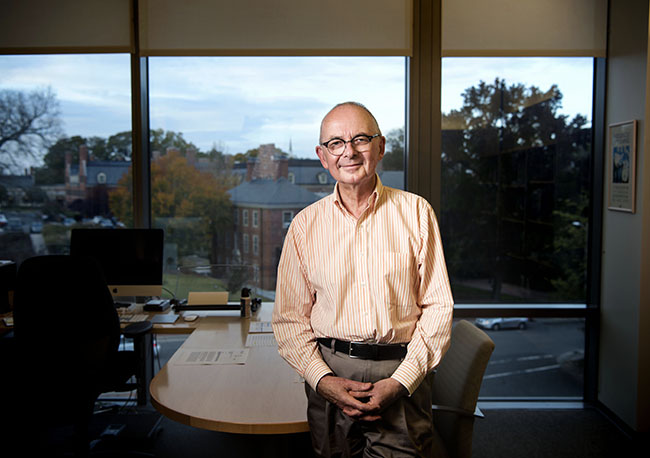 The humble act of walking is fundamental to humankind, but as a historical subject walking has received little scholarly attention. A collaborative effort between historians on both sides of the Atlantic is looking to fill in this gap the academic literature.
The humble act of walking is fundamental to humankind, but as a historical subject walking has received little scholarly attention. A collaborative effort between historians on both sides of the Atlantic is looking to fill in this gap the academic literature.
A 2013 conference on human locomotion during the long nineteenth century (ca. 1800 to 1914), co-sponsored by strategic partners King’s College London and the University of North Carolina at Chapel Hill, has resulted in a book of essays titled Walking Histories: 1800-1914 (Palgrave MacMillan, 2016). Chad Bryant, associate professor of history at UNC-Chapel Hill, Arthur Burns, professor of modern British history at King’s College London, and Paul Readman, professor of modern British history at King’s College London, served as editors of the collection.
The book’s 11 essays explore the role and experience of walking in locales as diverse as India, Hungary, Russia and Great Britain. It asks not only how various practices of walking emerged throughout the nineteenth century but how these practices, and the meaning that people attached to them, can provide original insights on themes central to modern history, such as the emergence of capitalist labor, civil society and politically charged boundaries.
The idea of studying walking came to Bryant and Readman after, fittingly enough, a walk. Most academic literature on walking focuses on it as a contemplative activity, something associated with philosophical inquiry and artistic ventures. But Bryant believed focusing on walking had the potential to shine new light on the transformations of the nineteenth century.
“We were taking aim at the concept of the romantic walk as an escape from the modern world, and trying to make the argument that walking is central to the modern experience,” Bryant explained.
A closer look at walking could also help us better understand our lives today, Bryant continued. Other modes of transportation, such as cars, motorcycles, planes and trains, have been well documented and detailed in several disciplines. Walking, however, hasn’t received as much attention from historians, and yet, as urban planners today know well, it is crucial to how we construct communities, interact with others and engage with the world around us.
The editors asked contributors from UNC-Chapel Hill, King’s College London, Louisiana State University, Penn State Brandywine, Cardiff University, the College of Charleston and the University of Winchester to view their research specializations through the lens of walking, a task that proved challenging at times, Bryant acknowledged. But, he pointed out, the challenge also appealed to the group.
“Everyone had their own subjects. What they did in the book was integrate walking into their subject area,” Bryant explained. “The book is a provocative thought piece. You get a new perspective on a variety of historical questions.” The collaboration also led to in-depth discussions between the authors about the ways in which the language around walking has changed.
Walking Histories was born out of the UNC-King’s Strategic Alliance that was formalized in 2006 and has flourished into one of the most ambitious partnerships between U.S. and U.K. universities. The partnership was initiated by the UNC College of Arts and Sciences and King’s School of Arts and Humanities and School of Social Science and Public Policy; it continues to grow and include additional schools and disciplines on both campuses.
Story courtesy of UNC Global




